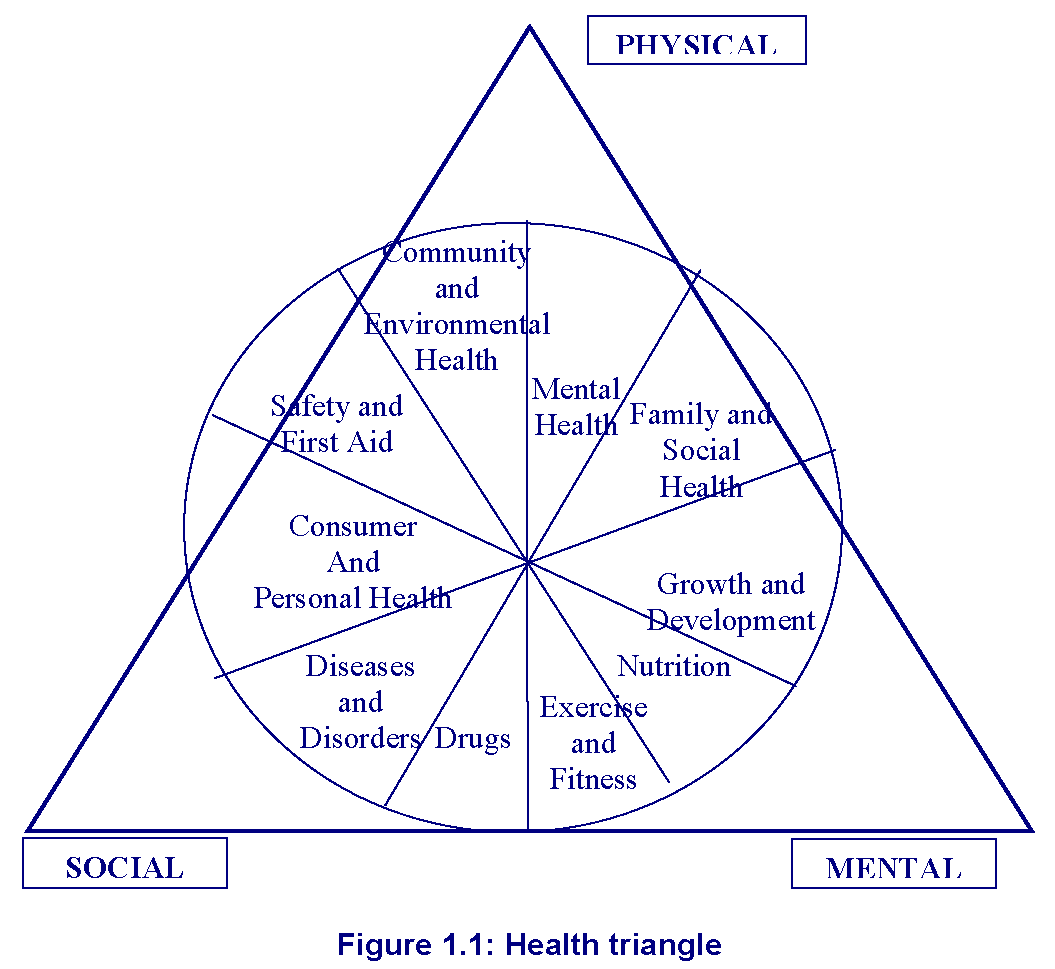Defined Terms and Documents 'Aboriginal Teenager Life Skills' RTV Social Inclusion Early Intervention Programme
Balanced Lifestyle or Live A Balanced Lifestyle or Wellness means the third of four determinants of Maximise Life Opportunities which involves a balance between -
i) Aspiring To A Successful Working Career,
ii) restorative sleep,
iii) leisure activities;
iv) a healthy food/fluid intake
v) Positive Stressors combating Negative Stressors.
Below is a worthwhile appraisal of Wellness.
|
A study by
the centres for disease control shows that -
- Acquiring the knowledge and skill to become an independent adult and to achieve optimum health is integral.
- Health: is a QOL that includes an individual’s physical, mental, and social well-being.
- Wellness: is a holistic concept that includes all areas of life and how they interact through positive and/or negative feedback loops.
- healthful
behaviour; action that -
- Risk behaviour: the opposite of healthful behavior. - Health promotion: informing and motivating people to adopt/maintain healthful behaviours. |
||||||||||
1.2 Definition
Health
is not just absence of disease. It
is part of a wider concept
of wellness which
emphasizes: |
||||||||||
1.3 Self-Responsibility for HealthAn individual who is informed and motivated to adopt/maintain healthful behavior is more likely to achieve optimum health (by choosing healthful behavior and making the most of his heredity and environment).
The wellness approach to health implies that the individual is responsible for choosing healthful behavior (e.g., wearing seat belt, exercising regularly, eating judiciously…), avoiding risk behavior (e.g., smoking cigarettes, using illegal drugs…), and adopting a balanced life-style as illustrated in Figure 1.1 of the health triangle. Figure 1.1: Health triangle
The triangle has three points—physical, mental, and social, representing the components of a Balanced Lifestyle, and an inscribed circle (behavior wheel) divided into 10 sectors related to wellness. The centre where the sectors intersect symbolizes the holistic effect of a single healthful or risk factor on one’s lifestyle; e.g., exercising regularly affects: 1) mental health (by releasing endorphins which relieve stress and create a feeling of well-being), 2) nutrition (by burning calories and helping to control weight) and 3) diseases and disorders (by strengthening the heart and improving its capacity to use oxygen. |
||||||||||
1.4 Achieving Optimum Health1.4.1 The Four Steps towards Achieving the Optimum Health 1) Acquire health knowledge (to know which behaviours are healthy and which are not). 2) Examine your behaviours to develop health awareness through health appraisal (one way is to set up a health behavior inventory, as shown in Table 1.1). 3) Set personal health goals and design specific plans to reach each goal, (to reinforce/acquire healthful behaviours and avoid/eliminate risk ones). 4) Make responsible health decisions, using a problem-solving approach, to choose the most healthful behavior, (i.e., a behavior that is also safe, legal, shows respect for self and others and follows accepted guidelines), if several alternatives are available.
Table 1.1: Health behavior inventory
Table 1.1: Health behavior inventory (Cont.)
1.4.2 Achieving Optimum Health: National GoalsHealth authorities should identify the major health problems in the country and set goals and plans to overcome them. Sanitation measures and effective mass vaccination programmers have reduced mortality from infectious diseases. The leading causes of death in advanced countries are heart disease, strokes, and cancer (72%), followed by accidents.
National goals and strategies to achieve them could include: 1) Preventive health services delivered to individuals by health providers: a-family planning b-pregnancy and infant care c-immunizations d-high blood pressure control e-sexually-transmitted disease service
2) Health protection measures used by governmental and other agencies as well as industry to protect people from harm: a-toxic agent control b-occupational safety and health c-accidental injury control d-fluoridation of community water supplies e-infectious agent control
3) Health promotion activities that individuals and communities can use to promote healthy lifestyles: a-eliminate use of tobacco b-reduce misuse of alcohol and drugs c-improve nutrition d-encourage exercise and fitness e-control stress |
||||||||||
1.5 Focus on Life Management SkillsFocus on Life Management Skills 1) Set health goals and make and follow plans to reach them. 2) Be aware of current health information and regularly engage in health appraisal. 3) Use the problem-solving approach to make responsible decisions that lead to actions that are healthful, safe, legal, and show respect for self and others. Use commitment and self-discipline in your lifestyle to engage in healthful behaviours and to avoid risk behaviours. |
